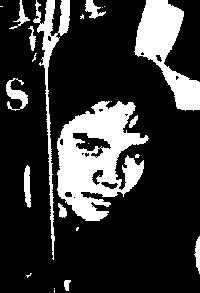Gary Giddins, Weather Bird: Jazz at the Dawn of Its Second Century ( a book review )
There is an indescribable joy in finding writers who not only know how to cleverly turn a phrase, but who truly understand how to imbue their writing with personality, life and a personal perspective that makes a reader want to keep coming back for more. Jazz writer Gary Giddins is such writer. A long-time contributor to The Village Voice and countless other periodicals, he has the widespread knowledge to state his opinions with confidence and assurance. You may not always agree with Giddins, but you can't help but respect his viewpoint. His Visions of Jazz: The First Century (Oxford University Press, '98) won widespread acclaim and was the first book on jazz to win the National Book Critics Circle Award for Criticism.
Now, with Weather Bird: Jazz at the Dawn of Its Second Century, Giddins serves up nearly 150 articles drawn mostly from his Village Voice column “Weather Bird,” and finds him exploring the nooks and crannies of what has clearly been an all-consuming passion. Culled from the period 1990-2003, with the emphasis being on the last three years (Giddins being otherwise occupied much of the time during the '90s and, consequently, a less-frequent contributor to the Voice), there's a remarkable breadth in these essays which, while distinctly American-centric in nature, still cover enough territory to paint a picture of Giddins as a voracious listener. From Louis Armstrong to The Bad Plus, from Dave Holland to Dave Douglas, from Sonny Rollins to David S. Ware and Charlie Christian to Charles Mingus, Weather Bird is about as comprehensive a critical look at jazz as one can find in 600 pages.
If there's any complaint it's that there's precious little attention given to artists who operate outside the continental 48; but given the already expansive scope of the book that almost feels like nitpicking. And, to be fair, artists including Han Bennink, Michiel Borstlap and even Peter Gabriel and Mick Jagger are mentioned, albeit in relative passing. But at least one cannot accuse Giddins of being staid in tradition. Relative newcomers including Stefon Harris and Jason Moran are mentioned alongside Herbie Hancock and Wayne Shorter; Vijay Iyer is given surprisingly extensive coverage as is Steven Bernstein, and Marc Ribot is given equal time to Marian McPartland. And, yes, Monk, Miles, Bird and Coltrane get a lot more footage than Zorn, Scofield, Garrett and Frisell, but what would you expect in a book by a critic who has been following the genre for over 40 years and writing about it for 30?
But it's Giddin's perception that makes this such an engaging read. In reviewing drummer Ronald Shannon Jackson, rather than summarily dismissing fusion as so many have, Giddins writes: “The trouble with most fusion is that nothing ever really fuses. A few surface aspects of jazz and rock are tacked together in a highly calculated manner that only confirms the suspicion that jazz-rock is more often than not an oxymoron—an exceedingly dull one at that…and [one] wonders anew at how its potential could so quickly be sapped of vitality and innovation.” Further on in the piece, Giddins goes further to dismiss some peoples' need to over-analyze. In describing Jackson's complicated rhythms, he says: “…he divides, subdivides, and turns around the beat in so many ways you don't want to even try and count along. Let the musicians worry about that; they're getting paid to do it.” In other words: don't intellectualize, just listen. Beautiful.
On the other hand, fans of groove-based music might bristle at this: “Is there any response to music more deadly than the dazed nodding of one's limbs because there is no nourishment for mind or body?” This in context of one of Miles Davis' last performances at the 1991 JVC jazz festival. Blasphemy? Perhaps. But also an interesting observation that says that music needs to engage more than one organ, and that's not a bad thought at all.
And listen to the way Giddins describes Jackie McLean: “McLean's primary home is his pitch, a curiously individual way of bending the tempered scale so that his every note is an expression of personality and vision.” Or Don Byron: “Byron's liquid clarinet is coolly lucid. His range…is less impressive than the unison sparkle he creates…” And how better to describe Howard Shore's soundtrack for David Cronenberg's film Naked Lunch with Ornette Coleman than this: “Okay, it sounds like movie music, yet it's hard to resist Coleman and strings—one naked, the other out to lunch. Imagine Skies of America with all the i's crossed and t's dotted.”
What Giddins can find that so few other writers can, and so many seek, is the pithy phrase that says it all; the bon mot that expresses just the right sentiment; le mot juste that accomplishes all it aspires to.
One may find plenty to agree with Giddins on; conversely, there is plenty of contention and much to dispute. But one thing that rests securely at the centre of Weather Bird: Jazz at the Dawn of Its Second Century is a clear perspicacity, a clarity of vision that puts everything Giddins writes within a broader contextual whole that is his own defined musical universe. And a big universe it is.

